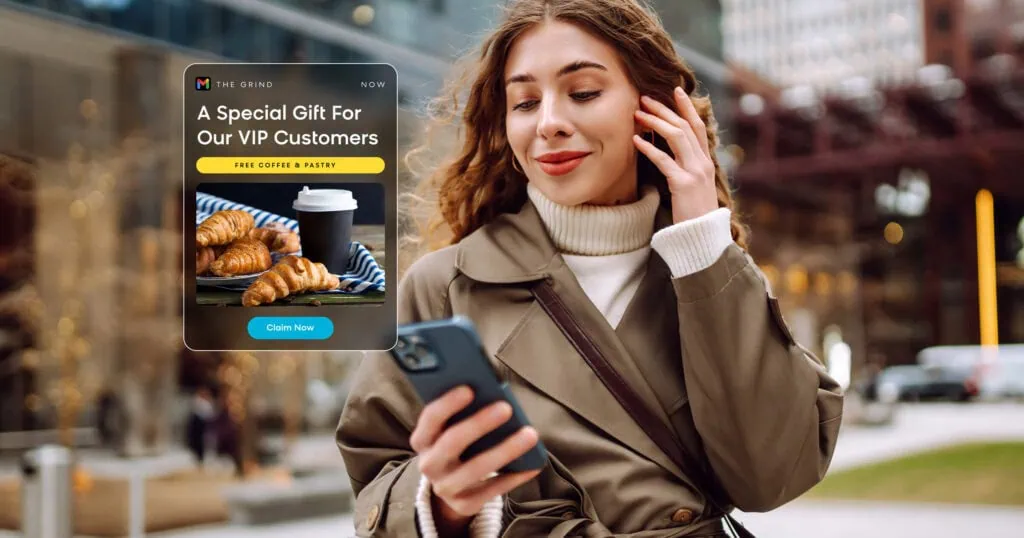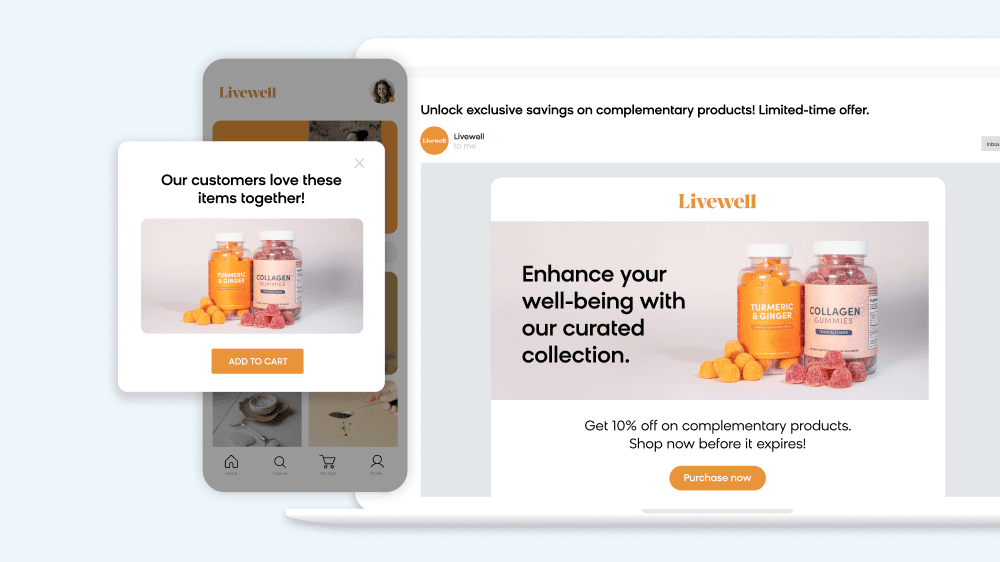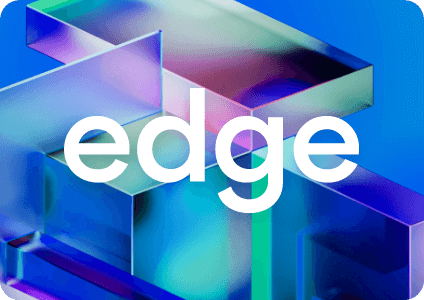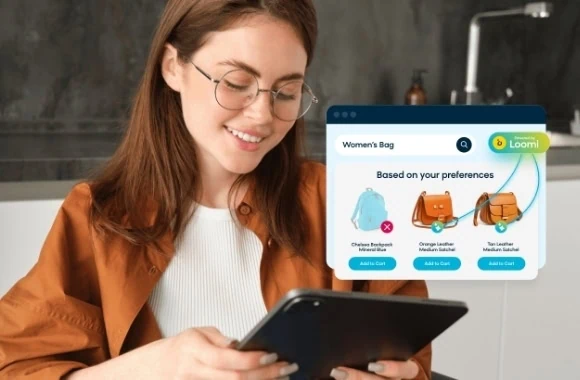Building customer loyalty is a goal for every brand, but that doesn’t mean there’s a simple, one-size-fits-all solution. It’s a constant challenge that often leaves brands searching for answers.
That’s why we went straight to the experts.
We teamed up with our trusted partners Shopify, Loyalty & Reward Co, and Antavo to tackle your most pressing loyalty questions and provide actionable insights that can help your brand turn first-time buyers into devoted customers.
Here’s their professional advice on building customer relationships that last:
What do you see as the biggest barriers for brands to build and maintain customer loyalty today?
Kal Stephen, Head of Enterprise, Lifestyle Vertical at Shopify
First, customers are loyal to their channels — whether that’s social, in-store, or online. Customers want to shop on the channels where they already spend time. So, brands need to meet customers where they are in order to build and maintain customer loyalty.
Unifying channels to get a single view of the customer is the biggest challenge — and opportunity — for brands to build stronger relationships with their customers. Because as we know, today’s shoppers aren’t linear. They move constantly between offline and online channels from discovery through purchase.
Michelle Ellicott-Taylor, Global Head of Partnerships at Antavo
One of the biggest challenges brands face in building and maintaining customer loyalty is the complexity of integrating different martech solutions. Loyalty programs don’t operate in a silo — they need to seamlessly connect with CRMs, CDPs, ecommerce platforms, and marketing automation tools.
However, slow and complex integrations can delay program launches and hinder real-time customer engagement. Additionally, aligning multiple martech vendors and ensuring smooth data flow between systems can be difficult, leading to disjointed customer experiences.
Brands that fail to overcome these barriers risk offering loyalty programs that feel outdated or disconnected from the rest of their customer journey.
What modern-day strategies can brands implement to turn first-time shoppers into loyal advocates?
Scott Harrison, Principal Consultant at Loyalty & Reward Co
Modern strategies start by ensuring that first-time shoppers see the value of a loyalty program immediately.
The key is to drive early wins by guiding customers through a well-designed loyalty loop — getting them to join, transact, redeem a reward, and quickly celebrate that success. This early, tangible experience not only creates a strong first impression but also reinforces the behaviors needed to keep them engaged.
From there, brands should focus on driving additional loyalty loops by continually encouraging repeat interactions and deepening customer relationships. Equally essential is fostering a test-and-learn culture — experimenting, gathering feedback, and refining strategies based on performance data.
Developing a well-crafted loyalty program is further supported by frameworks like the essential eight guiding principles with examples for loyalty programs, which provide actionable best practices to transform first-time shoppers into long-term, loyal advocates.
Kal Stephen, Head of Enterprise, Lifestyle Vertical at Shopify
Many brands struggle with creating personalized, tailored content for each shopper. But doing this requires integrating all of a brand’s sales channels, data, and back-end systems into a single platform — this is what unlocks massive value for end consumers (as well as retailers).
By providing personalized experiences and unifying the customer experience across channels, brands can turn first-time shoppers into advocates. Take, for example, post-purchase experiences: every post-purchase engagement is an opportunity for the consumer to reaffirm their values and personal style. When brands reinforce brand affinity through loyalty and rewards programs, post-order updates, or targeted marketing, they strengthen consumer-brand alignment and long-term engagement.
How do you measure the success of customer loyalty initiatives?
Michelle Ellicott-Taylor, Global Head of Partnerships at Antavo
Measuring the success of a loyalty program requires a combination of quantitative and qualitative metrics. KPIs such as customer retention rate, repeat purchase rate, and average order value (AOV) provide insight into how well a program is driving long-term engagement.
Additionally, tracking customer lifetime value helps assess the overall impact of loyalty initiatives on revenue.
Beyond transactional metrics, customer sentiment indicators like Net Promoter Score (NPS) and engagement levels — such as participation in challenges, referrals, or social media advocacy — offer a more comprehensive view of loyalty. A/B testing and attribution modeling can further help brands fine-tune their strategies and understand what truly resonates with customers.
Scott Harrison, Principal Consultant at Loyalty & Reward Co
Success is best measured by setting clear objectives at each critical stage of the customer journey and establishing specific KPIs to gauge progress.
For example, during acquisition, brands can track first purchase conversion rates; in onboarding, the time to first redemption becomes key; and in the growth stage, monitoring average order value is essential. These metrics not only signal how effectively customers are moving through the journey but also provide targets for campaigns, promotions, and tools to drive further engagement.
Additionally, tracking customer lifetime value offers insights into the overall financial impact of loyal customers, while benefit redemption rates indicate whether loyalty offerings resonate with consumers. Together, these metrics form a comprehensive framework that informs which initiatives to prioritize.
For those looking to dive deeper into the financial benefits of loyalty programs, Loyalty & Reward Co’s article on understanding loyalty ROI offers valuable insights on measuring returns effectively.
What role do you see AI playing in offering personalized, loyalty-driving customer experiences?
Michelle Ellicott-Taylor, Global Head of Partnerships at Antavo
On the one hand, with AI-powered data analysis brands can predict customer behavior, segment audiences more effectively, and deliver real-time, tailored incentives. AI-driven recommendations ensure that rewards, promotions, and communications are relevant to each customer, increasing engagement and purchase frequency.
However, there is an even bigger trend on the horizon, which is AI-powered agents, or agentic AI. Being a more autonomous AI than generative AI, it can actually perform tasks and configure platform settings based on user input — empowering marketers to focus more on creative tasks and execute segmentations, campaigns, and rewards faster with less effort, thus improving the experience for loyal customers.
Kal Stephen, Head of Enterprise, Lifestyle Vertical at Shopify
Brands that can harness the power of AI to surprise and delight their customers will be the most successful at growing relationships — especially when delivering these experiences at scale. There are numerous ways this can manifest, including delivering more effective promotions. AI can help brands to auto-generate custom promotions across ads, email, SMS, and messaging apps, as well as leverage segmentation and analytics to deliver more personalized offers.
Customer service and sales are two other areas. Retailers can use AI to turn support engagements into loyalty-driving opportunities, like offering personalized resolutions to inquiries, 24/7. From a sales perspective, AI sales agents can be used to engage, guide, and convert shoppers with one-to-one interactions. It can be especially helpful to detect shopper intent in real time (clicks, cart content, exit intent) and leverage past-purchase behavior to personalize conversations.
The beauty industry is doing some really interesting things from a personalization and customization standpoint. AI can be used to generate personalized skincare and makeup tips alongside product recommendations. Or, analyze historical data and identify patterns or trends in user preferences and product effectiveness.
What’s one piece of advice for brands looking to use AI to meet the growing personalization demands of shoppers?
Scott Harrison, Principal Consultant at Loyalty & Reward Co
Start with a strong foundation by ensuring your customer data is accurate and well organized. Leveraging platforms like Bloomreach — which seamlessly integrate AI with robust data infrastructure — can help you scale personalized experiences effectively while maintaining data quality and operational efficiency.
If you need further guidance on integrating AI and crafting effective loyalty strategies, consider consulting with loyalty consultants who specialize in this space.
Build Customer Loyalty That Lasts With Bloomreach
There’s one unifying thread that links all these expert opinions: To build long-lasting customer loyalty, brands need the right AI-powered tool for the job.
Bloomreach is the all-in-one platform you need to deliver truly engaging loyalty campaigns, create a personalized retention strategy, and so much more. Powered by Loomi AI, our next-generation AI purpose-built for ecommerce, our solution is designed to help businesses deliver the exact right message to the right customers at the right time — every time.
Ready to dive deeper into your loyalty strategy and take your loyalty game to the next level? Our Winning Playbook for the New Era of Customer Loyalty has everything you need to succeed. From decoding today’s customer expectations to implementing game-changing strategies, it’s your ultimate resource for building customer relationships that last.













